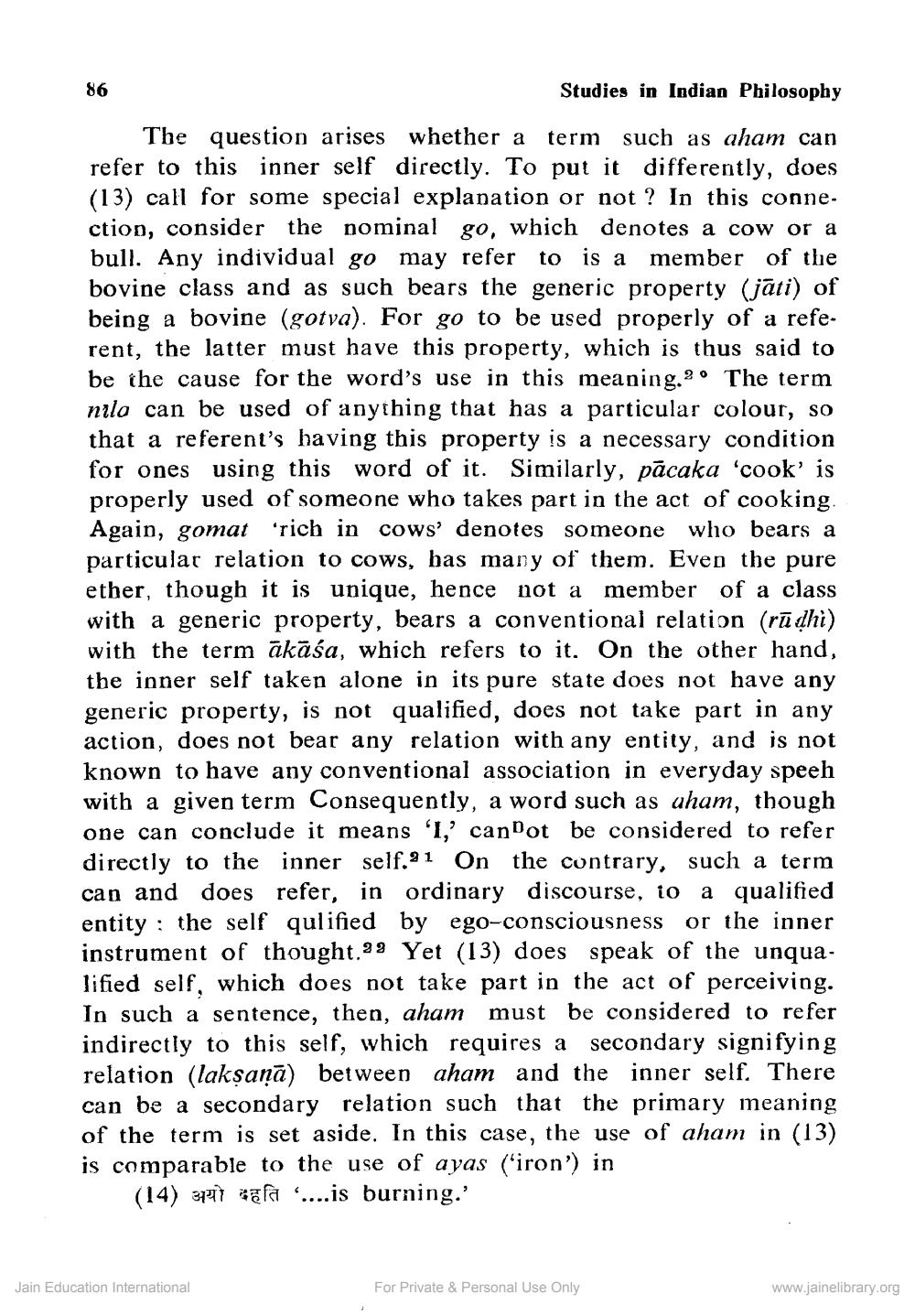________________
86
Studies in Indian Philosophy
The question arises whether a term such as aham can refer to this inner self directly. To put it differently, does (13) call for some special explanation or not? In this connection, consider the nominal go, which denotes a cow or a bull. Any individual go may refer to is a member of the bovine class and as such bears the generic property (jāti) of being a bovine (gotva). For go to be used properly of a referent, the latter must have this property, which is thus said to be the cause for the word's use in this meaning. 2. The term nilo can be used of anything that has a particular colour, so that a referent's having this property is a necessary condition for ones using this word of it. Similarly, pācaka 'cook' is properly used of someone who takes part in the act of cooking Again, gomat 'rich in cows' denotes someone who bears a particular relation to cows, has many of them. Even the pure ether, though it is unique, hence not a member of a class with a generic property, bears a conventional relation (rūdhi) with the term ākāśa, which refers to it. On the other hand, the inner self taken alone in its pure state does not have any generic property, is not qualified, does not take part in any action, does not bear any relation with any entity, and is not known to have any conventional association in everyday speeh with a given term Consequently, a word such as aham, though one can conclude it means 'I,' canPot be considered to refer directly to the inner self.91 On the contrary, such a term can and does refer, in ordinary discourse, io a qualified entity : the self qulified by ego-consciousness or the inner instrument of thought.99 Yet (13) does speak of the unqualified self, which does not take part in the act of perceiving. In such a sentence, then, aham must be considered to refer indirectly to this self, which requires a secondary signifying relation (laksaņā) between aham and the inner self. There can be a secondary relation such that the primary meaning of the term is set aside. In this case, the use of aham in (13) is comparable to the use of ayas ('iron') in
(14) 341) sala ....is burning.'
Jain Education International
For Private & Personal Use Only
www.jainelibrary.org




